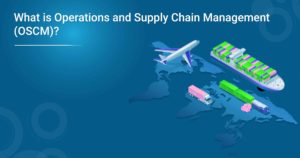Most people are familiar with scheduling in their personal lives – setting aside time for specific activities, organising events, and so on. But what about the business world? What is scheduling in operations management, and what role does it play in production processes? This blog post will explore the answers and more. We’ll discuss the different scheduling methods used in operations management and the associated benefits and challenges. By the end, you should better understand what scheduling is and how it can be used to improve production processes.
What Is Production Process Scheduling?
In operations management and production processes, scheduling is the process of planning, coordinating, and controlling the sequence of events and activities within a production process. Scheduling aims to ensure that resources are used optimally and effectively to meet customer demands.
There are three primary types of schedules used in production processes:
- Master Production Schedule (MPS): It is a plan that indicates when each item in the product mix will be produced.
- Production Activity Control (PAC): The PAC schedule tracks the progress of individual production orders through the manufacturing process.
- Capacity Planning: Capacity planning schedules ensure enough capacity is available to meet customer demand.
Scheduling is a critical component of operations management as it helps ensure that products are manufactured promptly and efficiently. When done correctly, it can help to minimise costs and maximise profits.
What is Scheduling in Operations Management?
Scheduling in Operations Management is the process of planning, coordinating, and controlling the use of resources to complete a production process. It involves deciding when to start and finish each task, which resources to use for each task, and the sequence in which to carry out the tasks. In manufacturing, scheduling in operations management is often done using computer software that considers various constraints such as available resources, customer demand, and production capacity.
Common Production Scheduling KPIs
A few key performance indicators (KPIs) are commonly used to measure the effectiveness of production scheduling in operations management and manufacturing processes. Here are six of the most common KPIs:
- On-time delivery performance: This KPI measures how well the production schedule meets customer demand in terms of delivery timing. The goal is to deliver as many products on time (or early) as possible.
- Setup time: This KPI measures the time taken to prepare a machine for production. The goal is to minimise setup time so the production process can be started more quickly.
- Cycle time: This KPI measures the time it takes to produce one product unit. The goal is to minimise cycle time so that more products can be produced in a given period.
- Changeover time: This KPI measures the time it takes to change from producing one product to another. The goal is to minimise changeover time so that production can be more flexible and adapt to changing customer demand.
- scrap rate: This KPI measures the percentage of products that are scrapped or rejected due to defects or poor quality. The goal is to minimise the scrap rate so fewer resources are wasted and more products meet customer standards.
- Downtime: This KPI measures the amount of time when a machine is not in use due to maintenance, repairs, etc.
Explain Stages of Production Scheduling
There are four main stages of production scheduling: planning, sequencing, releasing, and monitoring.
- Planning: The first stage of production scheduling is planning. In this stage, managers develop a master schedule that outlines the desired output for the upcoming period. This schedule considers factors such as customer demand, available resources, and lead times for each product. This stage aims to create a feasible plan that will meet customer demand without overloading the system.
- Sequencing: The second stage of production scheduling is sequencing. In this stage, managers determine the specific order in which products will be produced. This sequence should consider factors such as product dependencies and machine capacities. The goal of this stage is to create an efficient production plan that minimises bottlenecks and maximises throughput.
- Releasing: The third stage of production scheduling is releasing. In this stage, managers assign specific due dates to each production order. This release date should consider the lead time for each product and any slack time in the system. This stage aims to ensure that each order is completed on time and that there is no build-up of WIP Inventory.
- Forecasting: The first stage of production scheduling is forecasting, which involves estimating the future demand for a service or product. This can be done using statistical methods, market research, or other forecasting techniques.
- Capacity planning: The second stage of production scheduling is capacity planning, which involves determining how much capacity is needed to meet the forecasted demand. It includes considering both the physical and human resources that will be required.
- Scheduling: The third stage of production scheduling is creating the schedule. This includes deciding what order tasks need to be completed in and when they should be started and finished. It also includes assigning resources to tasks and ensuring that all constraints are considered.
- Monitoring and control: The fourth stage of production scheduling is monitoring and control, which involves ensuring that the schedule is followed and that any deviations are corrected. It can be done through regular status reports, earned value management, or other monitoring techniques.
- Adjustments: The fifth stage of production scheduling is adjustments, which involve making changes to the schedule as needed in response to changes in demand or other factors. This might include rescheduling tasks, reassigning resources, or adding new tasks to the schedule.
Also Read: What Is The Scope Of Operations Management?
Types of Production Scheduling
Different types of production schedules are needed to accommodate the different types of production systems. The three most common types of production scheduling are make-to-stock (MTS), make-to-order (MTO), and mixed mode.
Make-to-Stock Production Scheduling:
MTS aims to produce items in advance so that they can be stocked and ready for sale when customer demand arises. This type of production is typically used when demand is relatively stable and predictable, such as with fast-moving consumer goods. To maintain efficient inventory levels, MTS schedulers must understand both the lead time required to produce an item and the expected rate of customer demand.
Make-To-Order Production Scheduling:
In contrast to MTS, where goods are produced in advance of customer orders, MTO schedulers wait until they receive a customer order before starting production. This system is often used for custom or personalised products where each unit must be made specifically for the customer who ordered it. While this approach eliminates stock shortages, it can result in long lead times if capacity constraints exist within the manufacturing process.
Mixed Mode Production Scheduling:
Mixed-mode production scheduling is the process of creating a production schedule that includes both manufacturing and assembly operations. This type of scheduling can be used to improve efficiency and flexibility in the manufacturing process. Mixed-mode production scheduling can be beneficial because it facilitates coordination between manufacturing and assembly operations. This can lead to improved quality control, shorter lead times, and reduced inventory levels. In addition, mixed-mode production scheduling can help reduce manufacturing costs by reducing waste and improving the utilisation of resources.
What Are The Steps To Optimise Scheduling in Operations Management and Production?
To optimise production scheduling, businesses need to consider several factors, including:
- The type of products or services being produced
- The number of products or services needed
- The available resources (labour, materials, equipment)
- The time required to complete each production process
- Production constraints (e.g., due dates, capacity limits)
Once all of these factors have been considered, businesses can develop a production schedule that outlines when each step in the production process should be completed. This schedule can then be used to ensure that resources are utilised efficiently and that deadlines are met.
What Are The Benefits of Scheduling in Operations Management and Production?
The benefits of production scheduling are varied but can be broadly outlined as follows:

Improved Coordination:
Improved coordination between different departments and functions is one of the main benefits of production scheduling. Having a centralised view of all upcoming production tasks makes it much easier to ensure that everyone is on the same page and running towards similar goals and that no bottlenecks are formed. It can lead to increased efficiency and output and improved communication across the board.
Increased capacity utilisation:
Production scheduling can increase capacity utilisation by helping to ensure that all production resources are used as efficiently as possible. By reducing downtime and maximising the use of available resources, production schedules can help to improve overall productivity and reduce costs. In addition, effective production scheduling can help to improve customer satisfaction by ensuring that orders are delivered on time and as promised.
Improved quality control:
Improved quality control is one of the main benefits of production scheduling. By better understanding and anticipating customers’ needs, businesses can plan their production accordingly and ensure that a higher quality product is delivered. In addition, by reducing waste and maximising resources, businesses can also save money on production costs.
Reduced inventory levels:
Reduced inventory levels are one of the main benefits of production scheduling. By reducing the amount of inventory on hand, businesses can save money on storage costs and reduce the risk of stockouts. In addition, having a schedule in place can help to ensure that orders are filled promptly, and that production line disruptions are minimised.
Lower overall costs:
Production scheduling can lower overall costs by reducing the time and resources required to produce a product or service. By better understanding the production process and what is required at each stage, businesses can plan their work more efficiently and avoid unnecessary waste. This can lead to reduced production times, less downtime, and improved quality control. In turn, these efficiencies can save money on materials, labour, and other operating costs.
Also Read: What Are The Objectives Of Operations Management?
What Are The Challenges of Scheduling in Operations Management and Production?
Many challenges can arise when production schedules, some more common than others. Here are a few examples of potential challenges:
1) Not having enough information: To create an effective schedule, you need access to accurate and up-to-date information. It includes knowing what raw materials are available, the lead times for each component/part, etc. If any of this information needs to be included or updated, it can make it very difficult to create an effective schedule.
2) Changing priorities: Once a schedule is created, it can be difficult to change it without disrupting the entire production process. This is often due to dependent tasks – if one task is changed, it can have a ripple effect on other tasks down the line. As such, schedules often need to be flexible to accommodate changes in priorities or unexpected delays/problems.
3) Long lead times: Some products may have components with long lead times (e.g., weeks or even months). This can make it difficult to accurately predict when the finished product will be ready for shipment. In these cases, it may be necessary to create a “rolling” schedule that covers a longer period.
What Are The Roles Of a Production Manager?
A production manager is responsible for the day-to-day operations of a manufacturing or production facility. They oversee the entire production process, from raw materials to the final finished products. Production managers typically work in industrial and manufacturing settings.
A production manager’s primary role is to ensure that the manufacturing process runs smoothly and efficiently. They develop schedules and coordinate workers and resources to meet demand. Production managers also troubleshoot problems when they arise, ensuring that production goals are met.
In addition to managing the day-to-day operations of a facility, production managers also play a key role in planning and strategy. They develop long-term plans for meeting demand, increasing efficiency, and expanding capacity. Production managers may also be involved in decisions about new product development and changes to the manufacturing process.
Conclusion
In conclusion, scheduling in operations management and production processes is vital. By understanding what scheduling is and how it works, you can streamline your production processes and improve the efficiency of your operation as a whole. There’s a lot you need to learn concerning the operations manager. What if we say we have a course that will give you a headstart? Go check out our Advanced Certificate in Operations, Supply Chain and Project Management to fine-tune your skills or even start as a fresher.
More Information:
Which Functions are Included in IT Operations Management?
What Is Product Design In Operations Management?




























